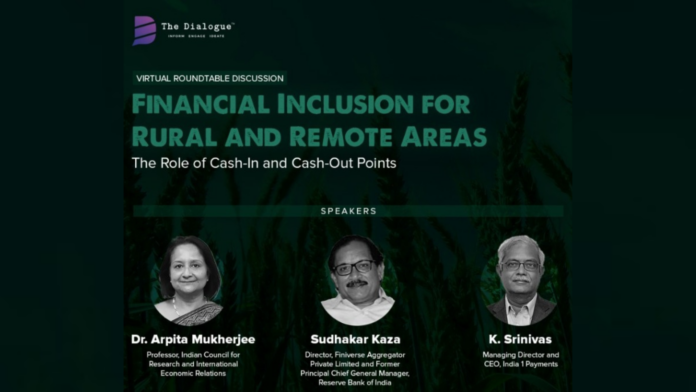Expert highlights the need for at least half a million to a million ATMs in the country.
September 22, 2023: As India advances technologically and digitally, financial inclusion will ensure economic growth and poverty reduction. As millions in rural areas struggle to access banking services, ATMs are vital for financial inclusion, especially in distributing subsidies.
With the intent to discuss this issue, The Dialogue, a tech policy think-tank, organised a webinar to deliberate and understand India’s financial inclusion efforts more contextually. The event was moderated by Mr. Kazim Rizvi, Founding Director of The Dialogue.
Speaking on the issue, Dr. Arpita Mukherjee, Professor, Indian Council for Research on International Economic Relations (ICRIER), said, annual ATM deployment has been declining in the recent past. It was growing at 6% during 2021-22, but as per the RBI data, this rate has declined to a meagre 2% (2022-23). We need to ensure that the commercial viability of setting up ATMs in underserved areas is considered and the interchange fee between the ATM provider and the Bank is tweaked to make this effort viable. Tailoring financial inclusion efforts towards formalising one’s access to financial services, is a key point that often gets underscored. Digital and Traditional payment modes must be worked upon in tandem to boost financial inclusion efforts together.
Mr. Sudhakar Kaza, Managing Director (Retired), Bharatiya Reserve Bank Note Mudran and Former Principal Chief General Manager, Reserve Bank of India, said, India has approximately 2.5 to 2.6 Lakhs ATMs, which is too low for the country. We need to have at least one ATM per village to synergise digital and traditional payment transactions. RBI should invite more companies to become White Label ATM Operators which gives a fillip to ATM expansion in the country. Primarily, there is a need to focus on five key areas i.e. subsidising the infrastructure for ATMs, insurance of cash in-transit which should be borne by banks or the government, ensuring customer protection and quick grievance redressal, nearest bank branch providing cash to ATMS and BCs and availability of currency notes in lower denominations for underserved areas.
Mr. Kazim Rizvi, Founding Director, The Dialogue said “Digital payments and cash-based payments do not operate in conflict but are complementary services. For rural and remote areas that primarily rely on cash, the proliferation of cash-in and cash-out points are extremely important. Financial inclusion efforts should be holistic and inclusive in nature.
Mr. K. Srinivas, Managing Director and CEO, India 1 Payments, said, Currently, Interchange is pegged at a significantly lower level than cost per transaction. This urgently requires a one-time correction. Further, amidst the continuously rising operational costs of ATMs, we need an interchange fee that is fixed to an index that adapts dynamically. The above two moves by the regulator/NPCI would rekindle the interest of ATM operators who are currently struggling with bulging losses. Interchange fee should be set at a level that enables ATM deployers to earn a reasonable return on their investment.
Despite the digital revolution’s role in boosting economic growth, ATMs remain essential for rural Indian citizens. They complement digitization efforts and prevent financial exclusion in remote communities

